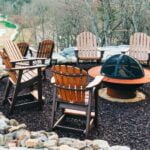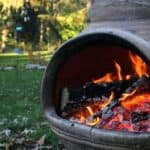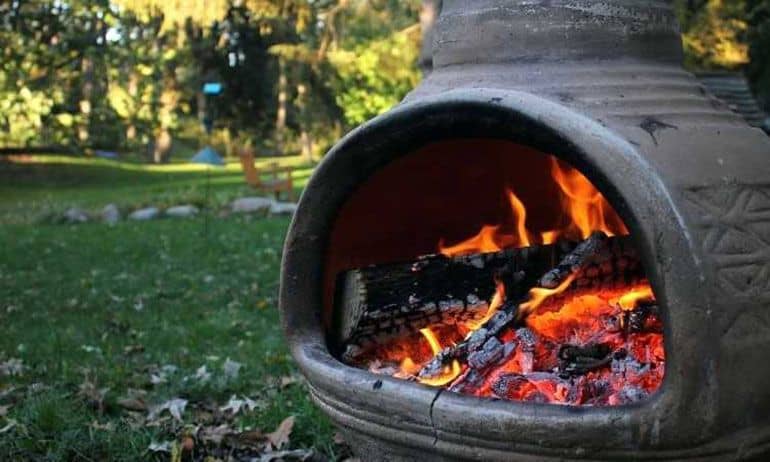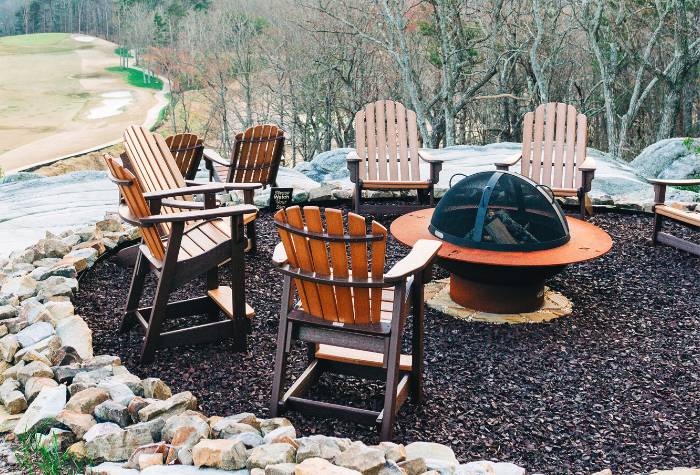If your entertainment plans include a fire pit in the backyard, safety should be one of your top concerns. We look at how to keep your fire pit safe during and after use.
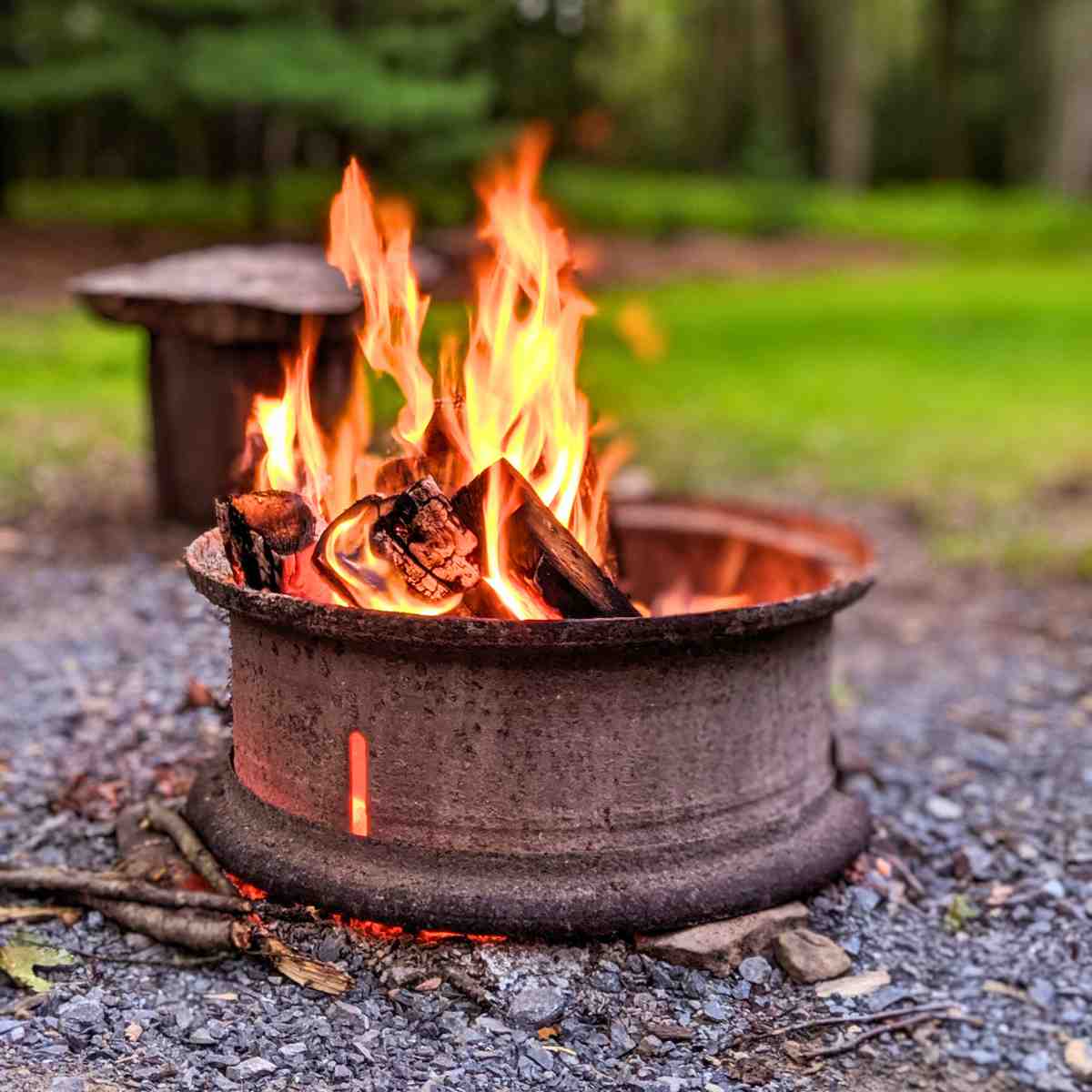
Gathering around an outdoor fire pit can be a great way to spend an evening with family and friends. It’s cozy and jovial, but it can also be dangerous if you don’t give the fire the respect it demands. One of the key safety precautions you need to take is to ensure you have properly extinguished the fire before you head inside for the night. Never leave a fire – or even the dying embers of a fire – unattended.
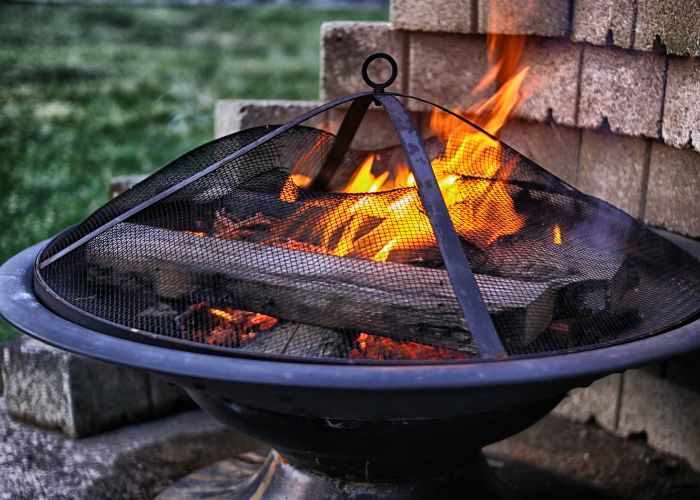
What Can You Use to Extinguish a Fire in a Fire Pit?
A Fire Pit Lid or a Fire Blanket
Some fire pits come with specifically designed fire pit lids you can use to extinguish the fire. These fire pit lids work by cutting off the supply of oxygen to the fire and, as such, are only effective if they seal the fire pit completely. Even if you use a fire pit lid, you should still take adequate measures to ensure the fire has been properly extinguished before leaving it unattended.
A fire blanket made of thick, non-combustible material can also be placed over the fire pit to smother the fire and extinguish it. A fire blanket can also stop dying embers from escaping and igniting nearby flammable materials.
Water
Good old H2O is a reliable option for putting out a fire in an outdoor fire pit. That being said, it’s not quite as simple as chucking a bucket of water on the fire and walking away. When extinguishing a fire with water, there is a risk of the water turning into burning hot steam as it hits the fire, which could result in severe burns. For this reason, it is better to use a hose pipe – with a gentle sprinkler attachment – rather than a bucket of water. This way, you can stand a good distance from the fire when you put it out.
Sand
Sand is another good option for smothering an outdoor fire and preventing it from re-igniting. Once poured completely over the embers, the sand will act as an insulator and prevent oxygen from reaching the fire. However, it is important to use dry sand that is free of debris or contaminants.
Step-by-Step Guide to Extinguishing a Fire
Step 1: Allow the Fire to Burn Down
The only time you should attempt to put out a fire that still has flames is in an emergency. When it comes to extinguishing a fire, you need to plan ahead as you don’t want to attempt to put out a fire that is still burning strong. An hour or so before you plan to go inside, stop adding fuel to the fire and let it burn down as much as possible on its own.
Step 2: Spread out the Burning Embers
Once the fire has died down, use a shovel or a poker to spread out any large chunks of wood or coals so they aren’t touching. This will reduce heat retention and the chances of the fire re-igniting.
Step 3: Extinguish the Embers
At this point, you can extinguish the embers using either a garden hose, a fire pit lid, or sand. Whichever option you use, make sure that the contents of the fire pit are completely covered.
Step 4: Check for Smoldering Embers
Once you have given the sand or fit pit lid time to smother the fire – or have ensured that the contents of the fire pit are completely drenched – it is time to check for smoldering embers. Using a shovel or poker, stir the embers and verify that there are no glowing coals or smoldering embers. If you discover any, sprinkle more water over them until they have been completely extinguished.
Step 5: Allow the Fire Pit to Cool Completely
To mitigate the risk of the embers reigniting, do not leave the fire pit until it has cooled completely. Touch the pit’s surface to ensure that it is no longer warm to the touch.
Step 6: Dispose of the Ashes
Once the fire pit has cooled completely, use a shovel to place the ashes in a metal – or non-combustible – container or bucket. Store the ashes in this container away from any flammable materials. Wait at least 24 hours to ensure that any remaining embers have been fully extinguished before disposing of the ashes in a designated ash-disposal area.
Does the Material of the Fire Pit Change the Method?
While the material from which the fire pit is constructed doesn’t alter the basic steps for extinguishing the fire, it might make a difference in whether you choose to use water, a fire blanket, or sand as your extinguisher.
- Metal fire pits: usually made of cast iron or steel, metal fire pits are very durable and can withstand high temperatures. However, the sudden change in temperature if you use water to extinguish the fire may damage the metal over time. Because metal fire pits can be quite easily sealed, a fire pit lid or a fire blanket are good options here.
- Concrete fire pits: concrete fire pits are durable and can withstand high temperatures, but concrete can absorb moisture. This means you might need to use a little more water to extinguish the fire than you would with a metal fire pit.
- Pebble or wooden fire pits: if you have a pebble or wooden fire pit, you want to be careful not to use too much water as this can damage the pebbles or wood over time.
Common Problems
There are a few potential difficulties that you may encounter when trying to extinguish a fire in an outdoor fire pit.
Strong Winds
Generally speaking, it’s not a good idea to light a fire outdoors if the conditions are windy, as it is difficult in these conditions to prevent sparks from blowing out of the fire and potentially starting new fires. If the wind picks up during the evening, let the fire die down as soon as possible and take extra care to ensure that the embers are properly drenched or smothered before you start spreading them around with a poker.
Dry Conditions
Dry conditions can make it more difficult to extinguish a fire as there is less moisture in the air to help cool down the fire pit. Under these conditions, be extra vigilant about ensuring that the fire has been completely extinguished before leaving it unattended.
Improper Fuel
Using certain fuel types – such as gasoline or other flammable liquids – to start or stoke the fire can make it more difficult to extinguish, even after the fire has been burning for a long period.
Inadequate Extinguishing Methods
If you don’t make sure – and we mean really make sure – that the fire has been properly extinguished, it can reignite at a later stage. Improper ash management and disposal can also pose a fire risk.
Navigating Local Regulations
Different states or cities may have specific regulations regarding the use of outdoor fire pits. Here are some guidelines that you can follow to find out if there are any specific restrictions or regulations in the area in which you live.
- Visit the official website of your local fire department or city/county government. Many jurisdictions have online resources that provide information on fire safety regulations, including those related to outdoor fire pits.
- Contact the fire department directly. If you can’t find the information you seek online, try contacting your local fire department directly. They will be able to guide you to the relevant regulations and provide you with information about required permits.
- Check with your homeowners’ association. If you live in a community with a homeowners’ association, they might have their own set of rules and regulations regarding outdoor fire pits.
General Fire Pit Safety Tips
Safely extinguishing your fire is easier if you also follow these general fire safety tips.
- Make sure your fire pit is in a safe location away from flammable materials. Never place your fire pit under overhanging branches or near trees, bushes, or flammable structures.
- Only use approved and dry fuel sources for your fire pit. Never use gasoline, lighter fluid, or other flammable liquids to start or maintain the fire. These substances can cause the fire to flare up uncontrollably.
- Never leave the fire unattended. Not even for a short period of time.
- Use proper fire management tools, such as a poker and tongs, to control the fire and handle embers safely.
- Be aware of the weather conditions, and let the fire burn down earlier than planned if they become unfavorable.
- Be sure always to have fire extinguishing tools – such as water, sand, a fire blanket, or a fire extinguisher – nearby in case of an emergency.

